Abstract
Skinner's contributions to psychology provide a unique bridge between psychology conceptualized as a biological science and psychology conceptualized as a social science. Skinner focused on behavior as a naturally occurring biological phenomenon of interest in its own right, functionally related to surrounding events and, in particular (like phylogenesis), subject to selection by its consequences. This essentially biological orientation was further enhanced by Skinner's emphasis on the empirical foundations provided by laboratory-based experimental analyses of behavior, often with nonhuman subjects. Skinner's theoretical writings, however, also have affinity with the traditions of constructionist social science. The verbal behavior of humans is said to be subject, like other behavior, to functional analyses in terms of its environment, in this case its social context. Verbal behavior in turn makes it possible for us to relate to private events, a process that ultimately allows for the development of consciousness, which is thus said to be a social product. Such ideas make contact with aspects of G. H. Mead's social behaviorism and, perhaps of more contemporary impact in psychology, L. Vygotsky's general genetic law of cultural development. Failure to articulate both the biological and the social science aspects of Skinner's theoretical approach to psychology does a disservice to his unique contribution to a discipline that remains fragmented between two intellectual traditions.
Full text
PDF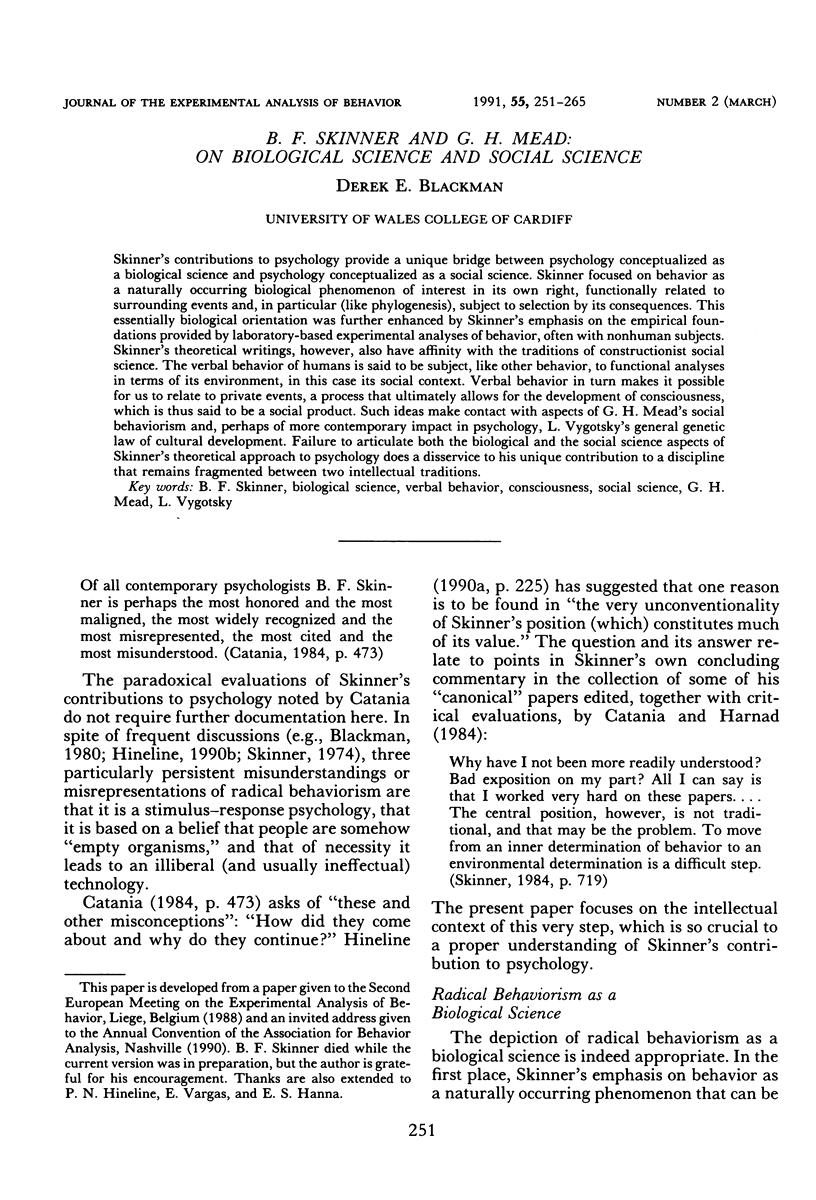
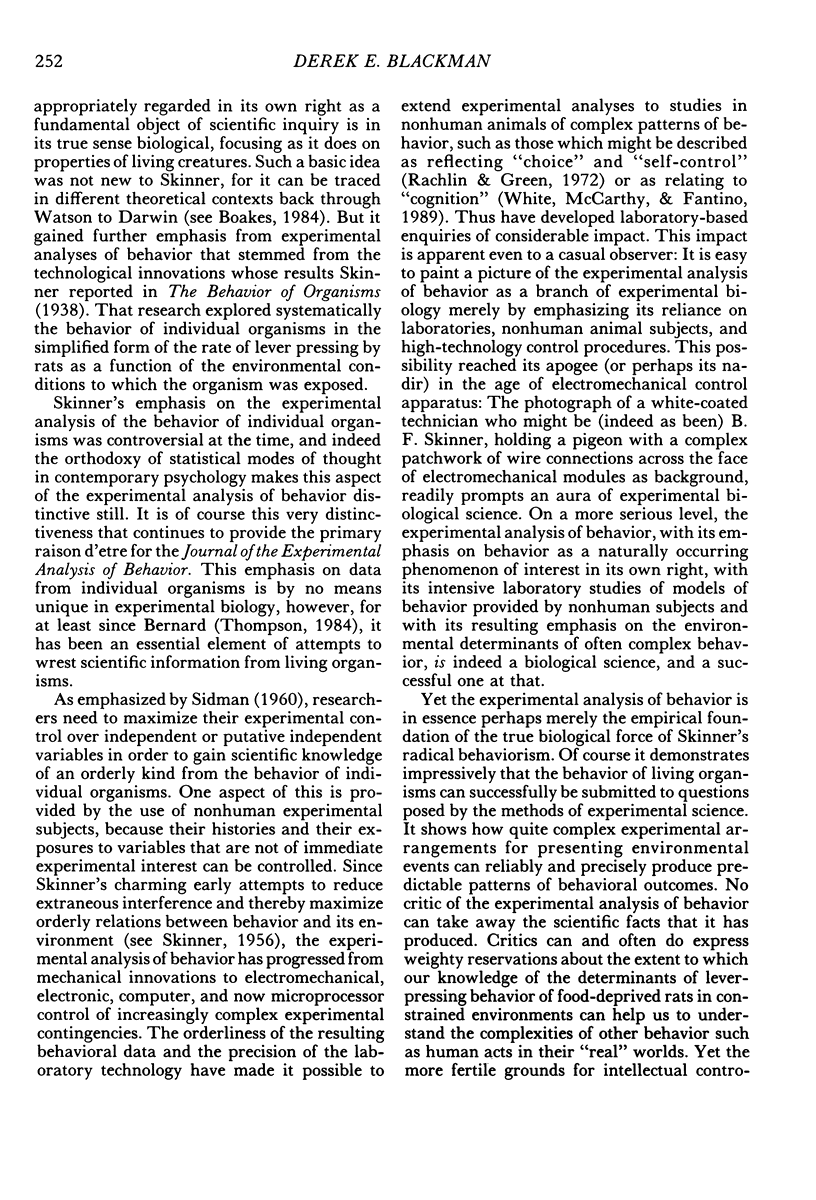
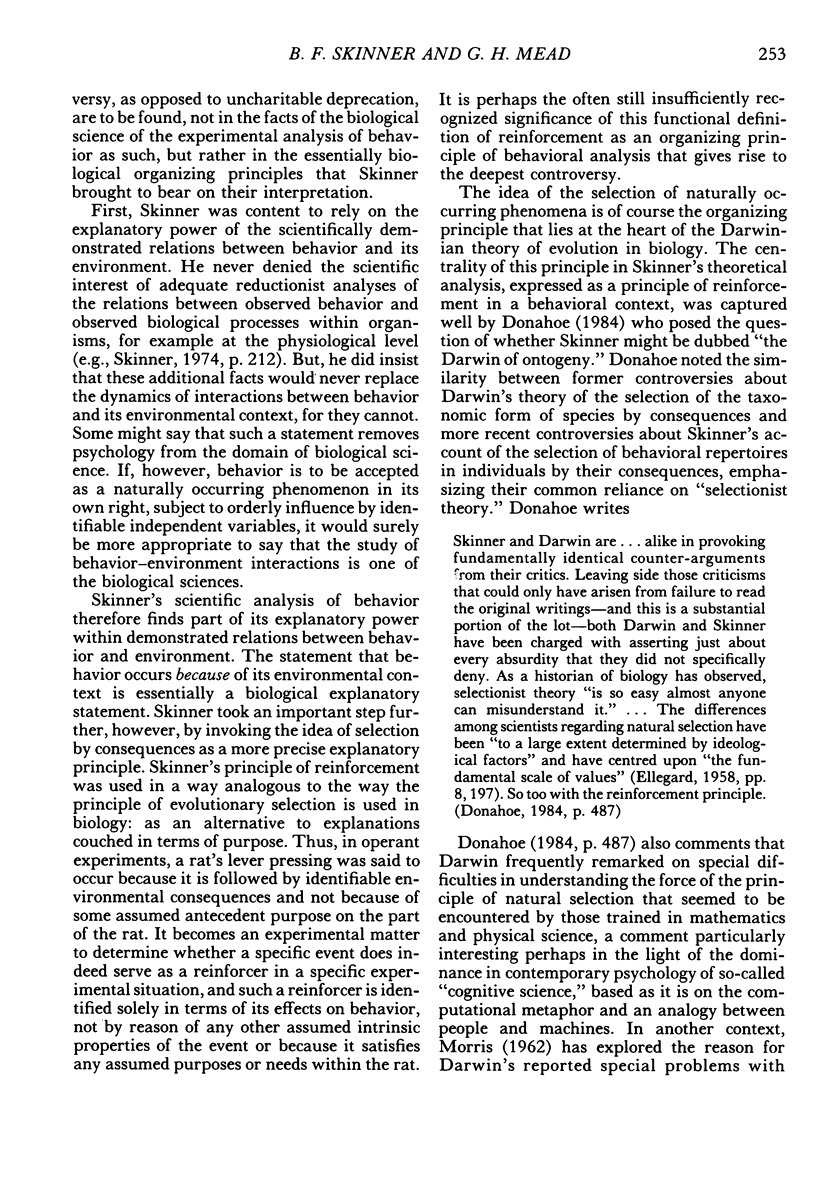
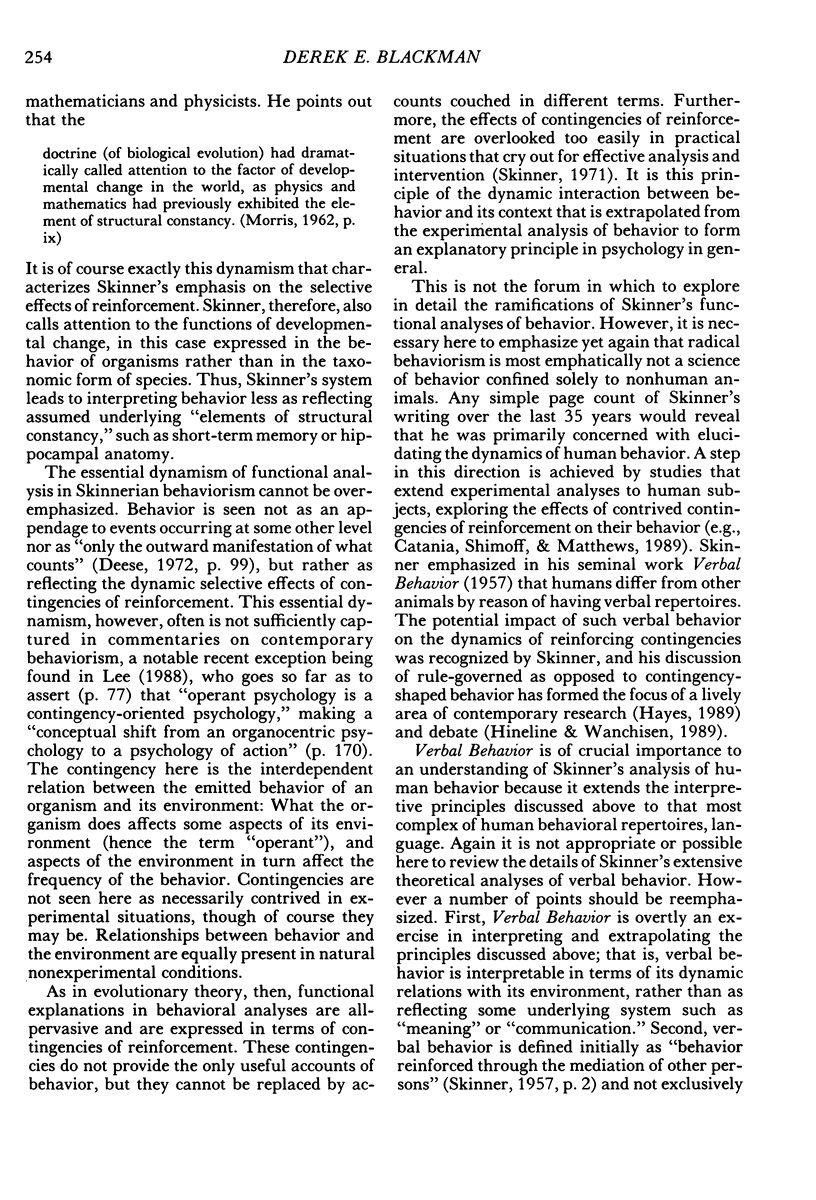
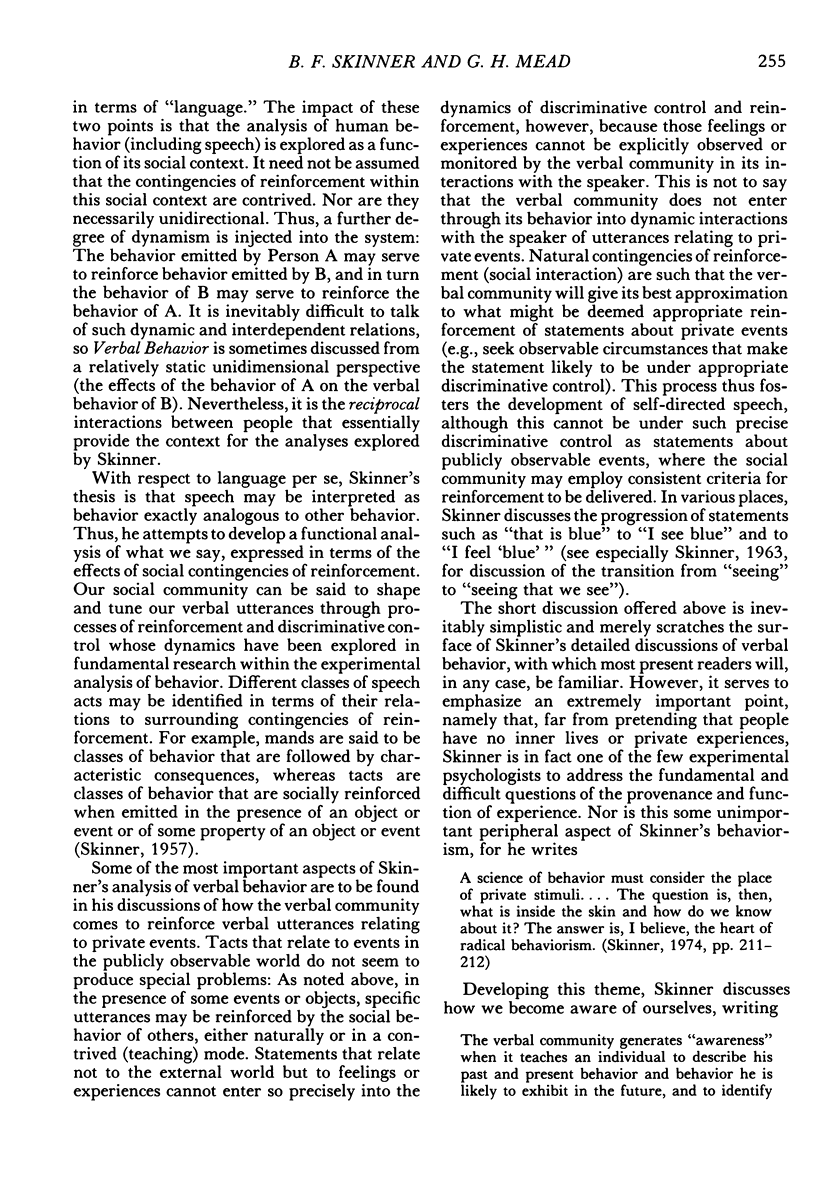
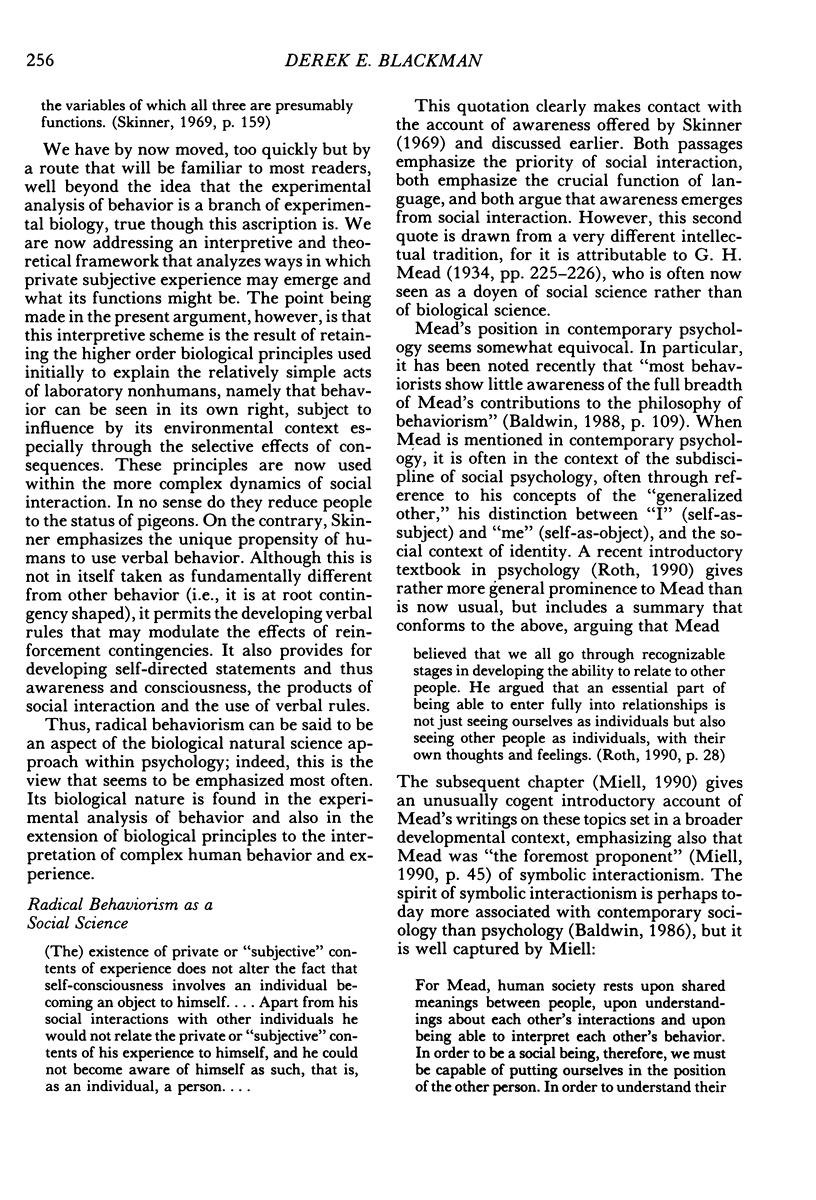
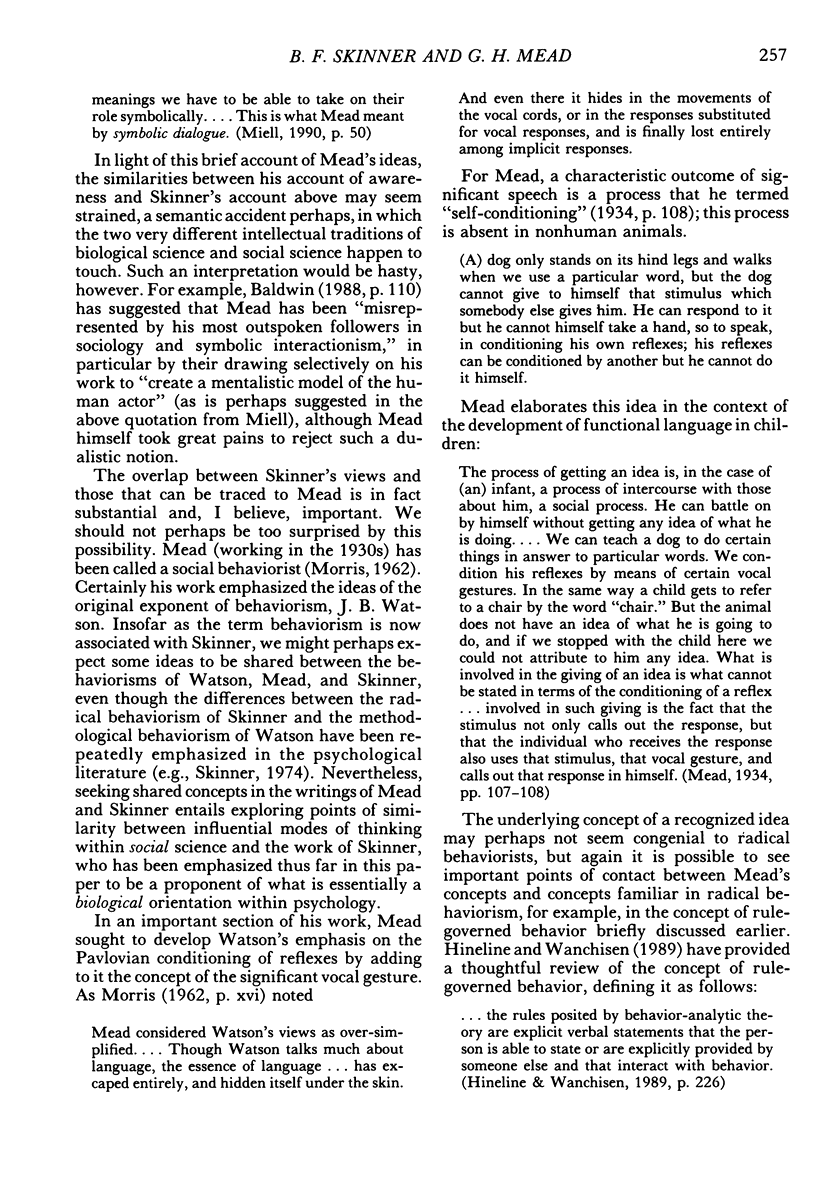
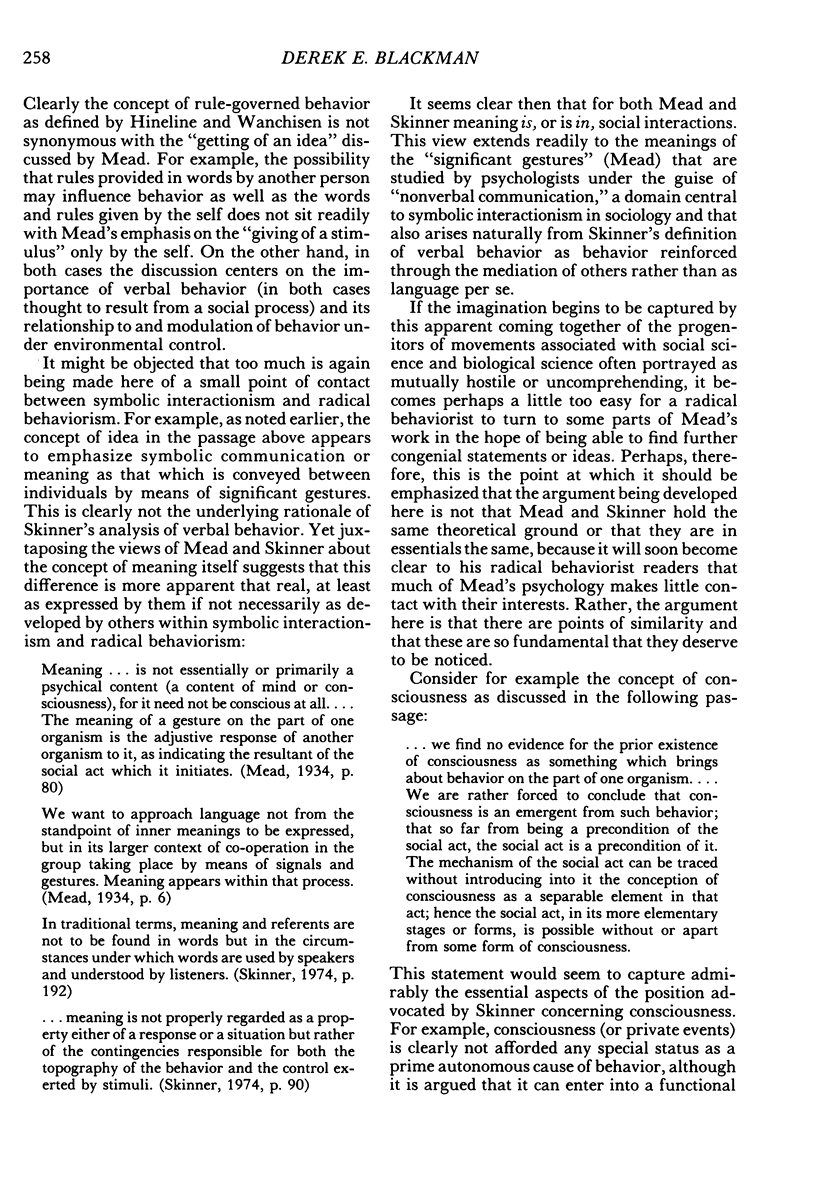
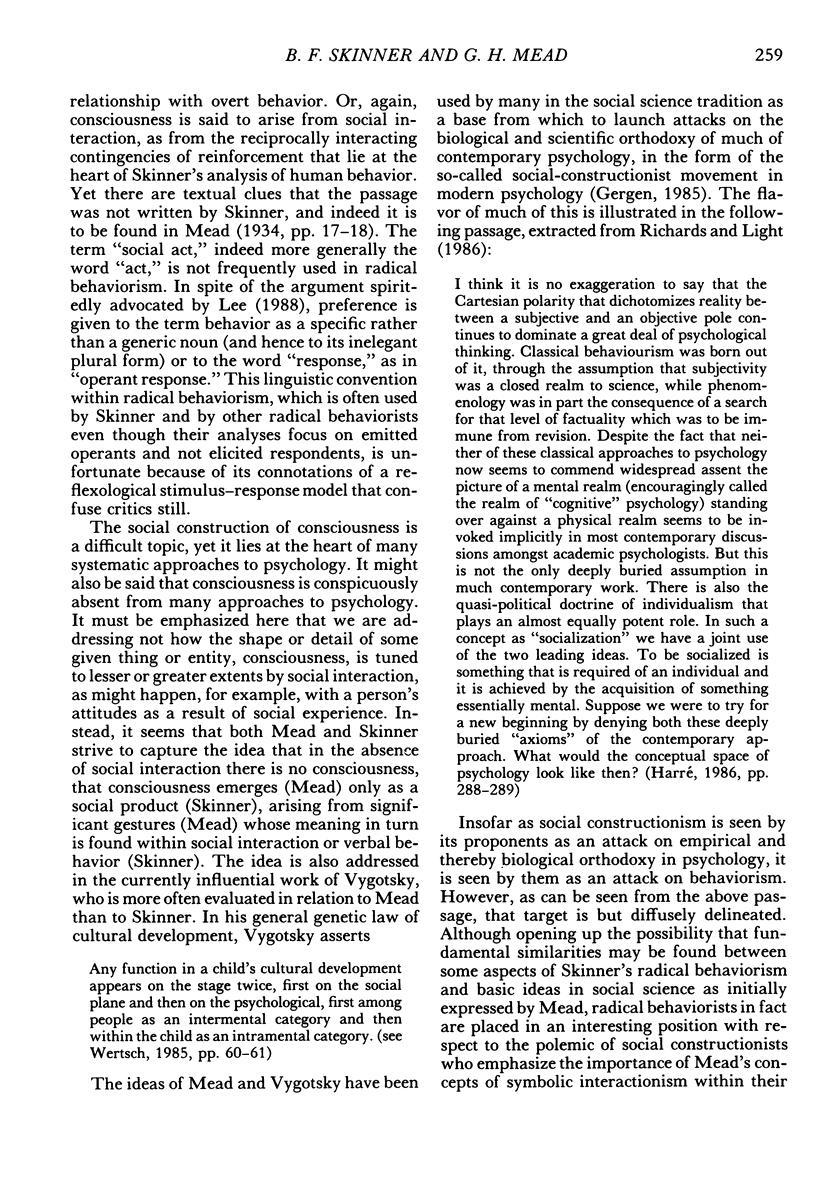
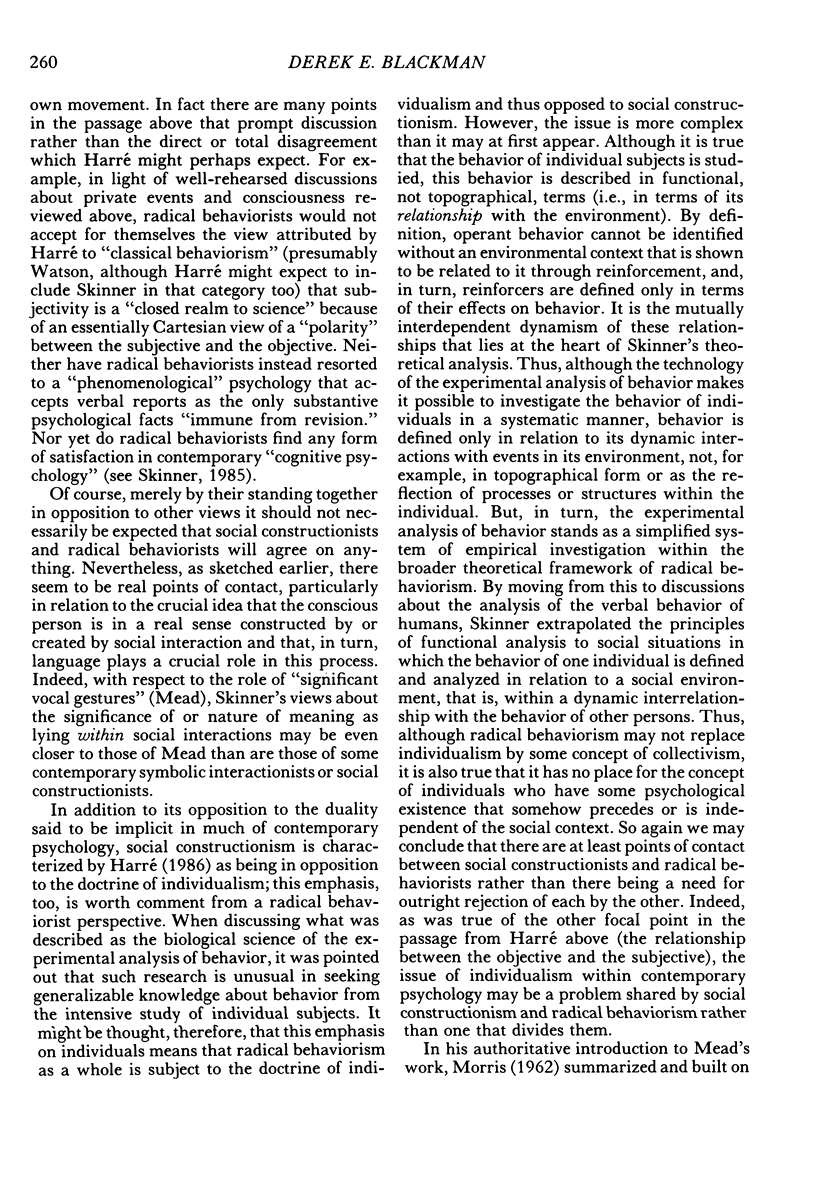

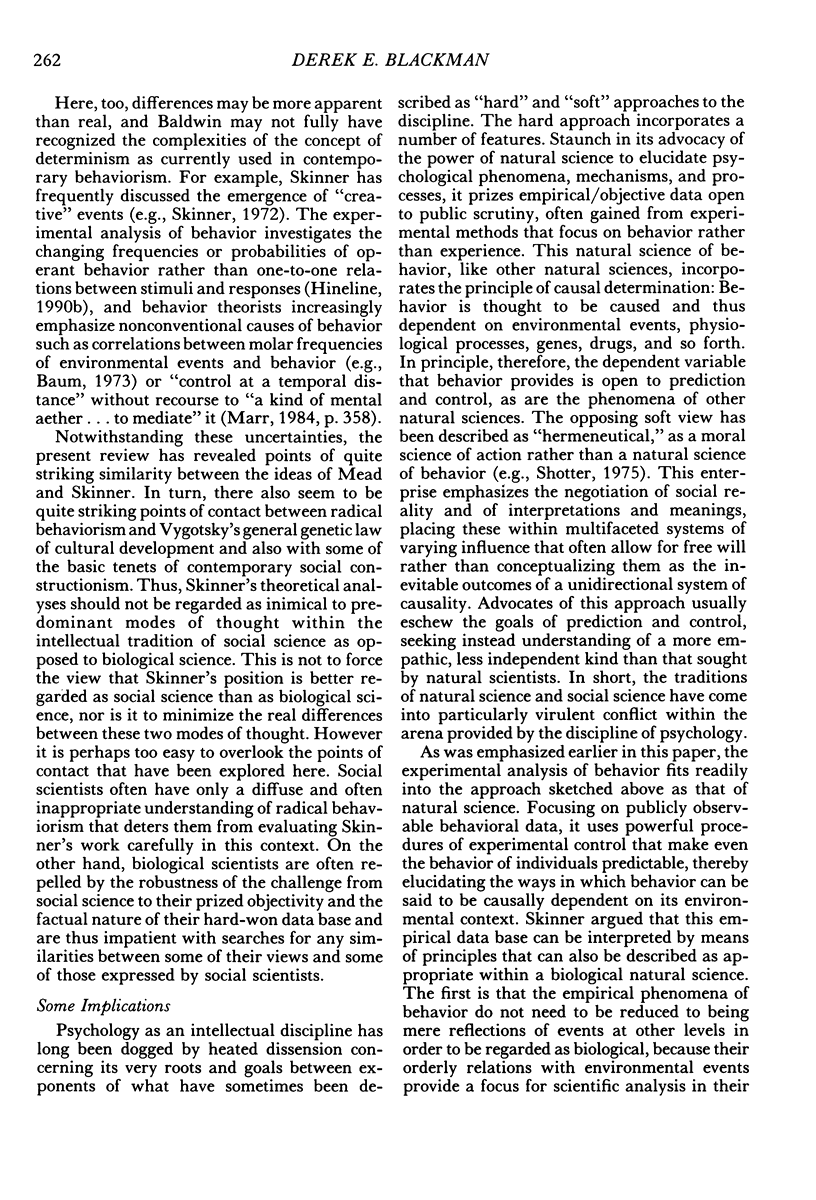
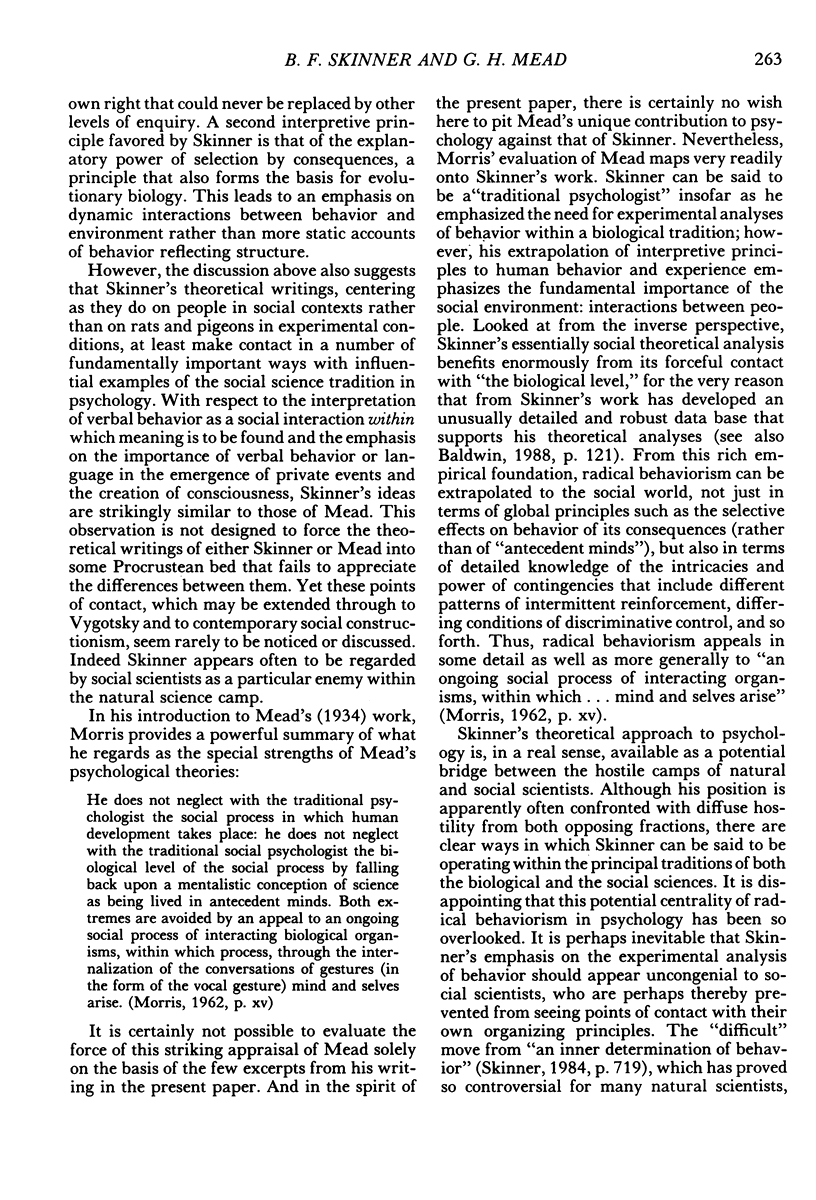
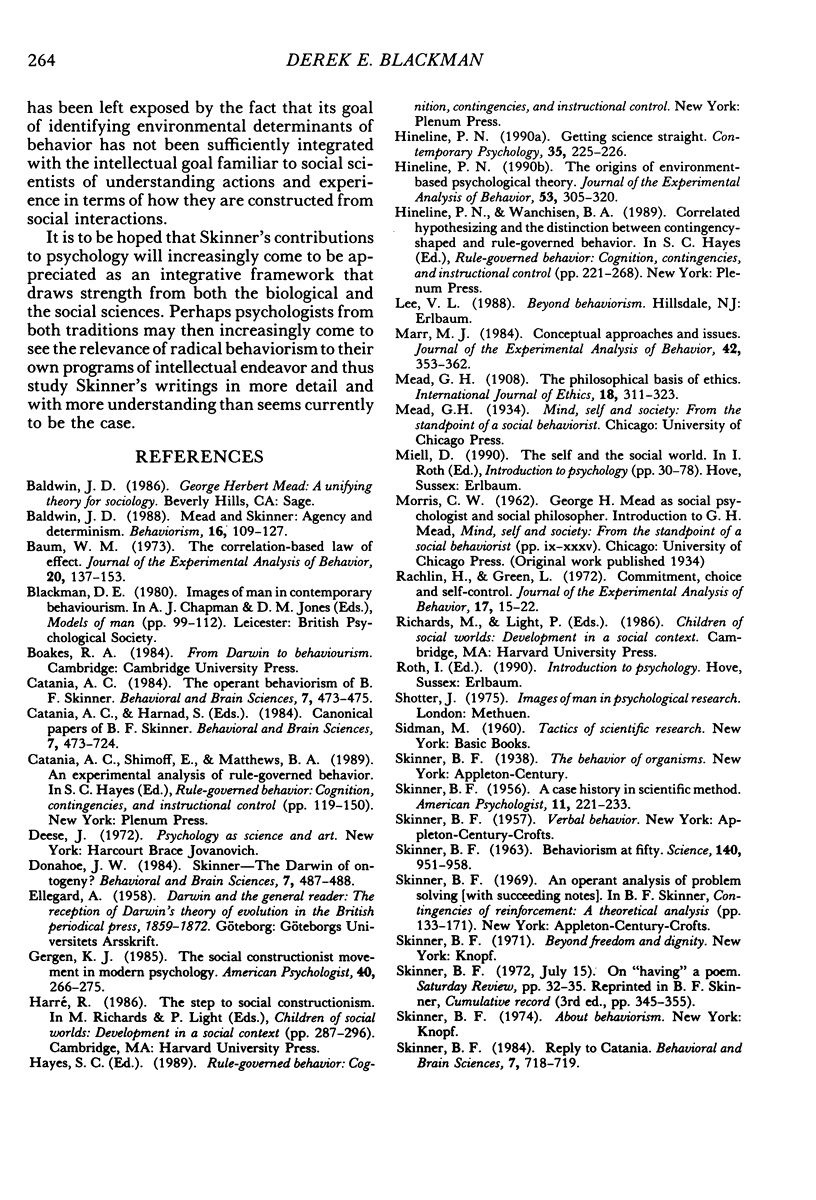
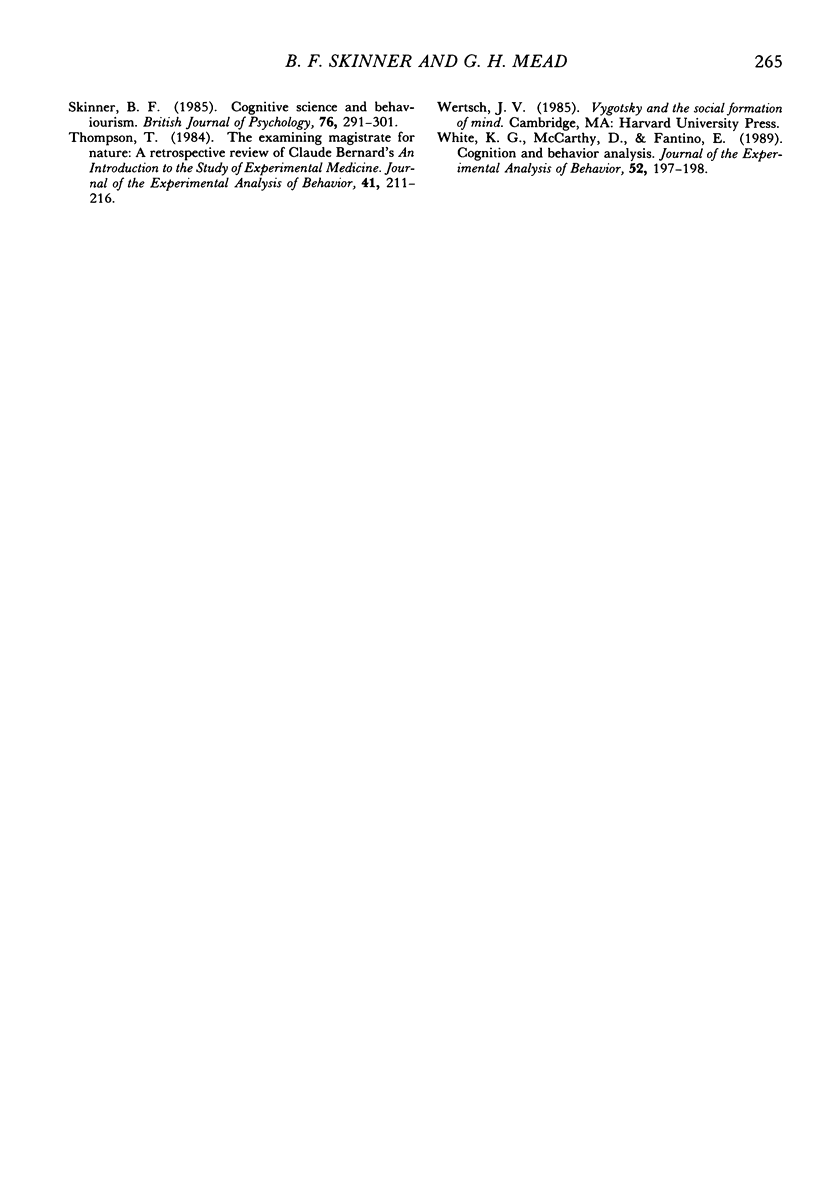
Selected References
These references are in PubMed. This may not be the complete list of references from this article.
- Baum W. M. The correlation-based law of effect. J Exp Anal Behav. 1973 Jul;20(1):137–153. doi: 10.1901/jeab.1973.20-137. [DOI] [PMC free article] [PubMed] [Google Scholar]
- Hineline P. N. The origins of environment-based psychological theory. J Exp Anal Behav. 1990 Mar;53(2):305–320. doi: 10.1901/jeab.1990.53-305. [DOI] [PMC free article] [PubMed] [Google Scholar]
- Marr M. J. Conceptual approaches and issues. J Exp Anal Behav. 1984 Nov;42(3):353–362. doi: 10.1901/jeab.1984.42-353. [DOI] [PMC free article] [PubMed] [Google Scholar]
- doi: 10.1901/jeab.1984.41-211. [DOI] [PMC free article] [Google Scholar]
- Rachlin H., Green L. Commitment, choice and self-control. J Exp Anal Behav. 1972 Jan;17(1):15–22. doi: 10.1901/jeab.1972.17-15. [DOI] [PMC free article] [PubMed] [Google Scholar]
- SKINNER B. F. Behaviorism at fifty. Science. 1963 May 31;140(3570):951–958. doi: 10.1126/science.140.3570.951. [DOI] [PubMed] [Google Scholar]
- Skinner B. F. Cognitive science and behaviourism. Br J Psychol. 1985 Aug;76(Pt 3):291–301. doi: 10.1111/j.2044-8295.1985.tb01953.x. [DOI] [PubMed] [Google Scholar]
- White K. G., McCarthy D., Fantino E. Cognition and behavior analysis. J Exp Anal Behav. 1989 Nov;52(3):197–198. doi: 10.1901/jeab.1989.52-197. [DOI] [PMC free article] [PubMed] [Google Scholar]


